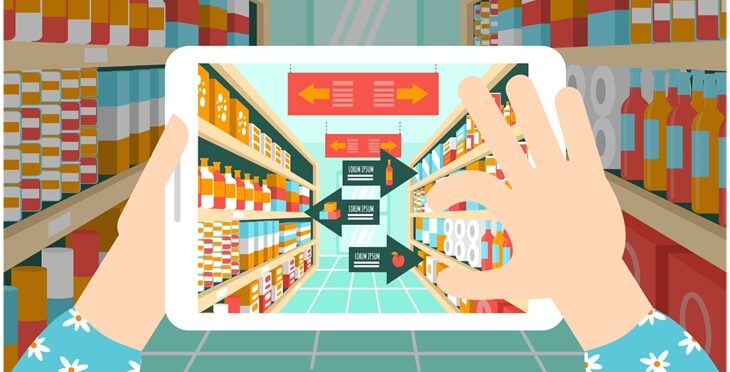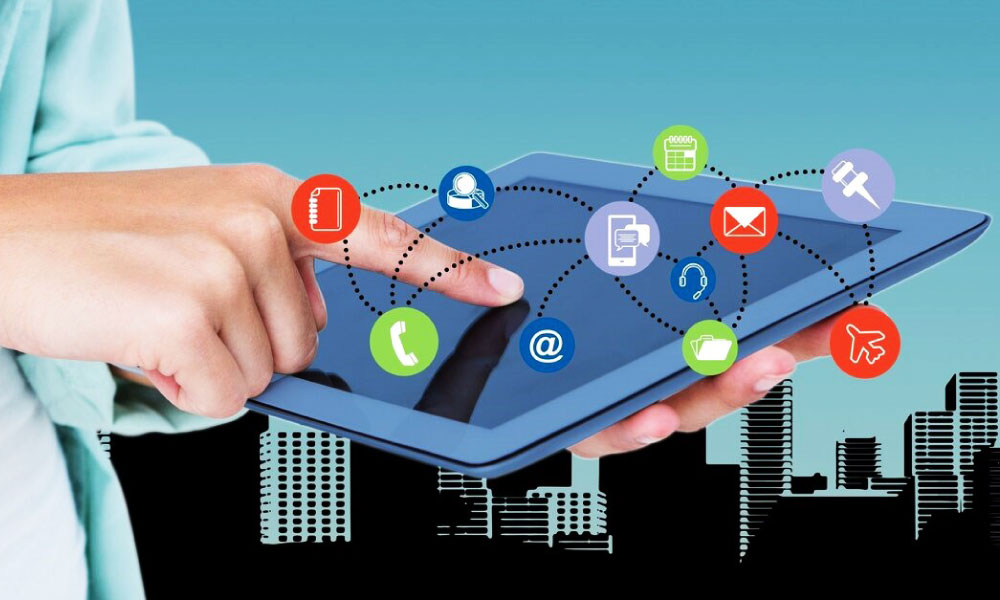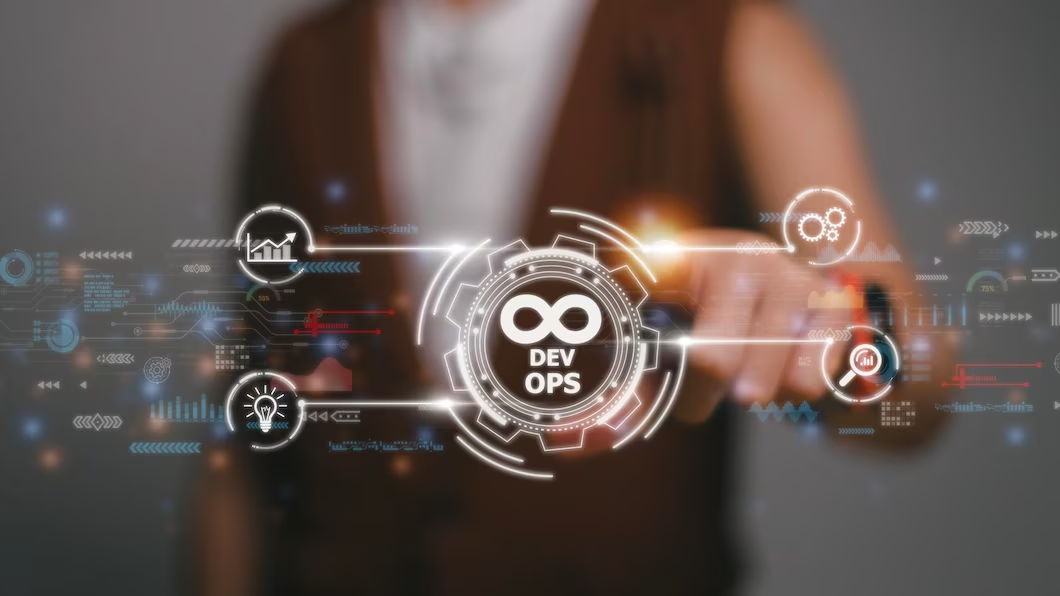VR and AR in Food Business are going to disrupt the industry. It won't happen right away. But, it will happen soon, with many experts estimating that it will take three to five years before its full impact. Also, many industries are already implementing the technology to boost productivity and better utilize the content.
VR And AR In Food Business: Applications
Human-Machine Interfaces
Rather than replacing humans, augmented reality helps humans and machines to collaborate. By eliminating the need for a physical prototype, augmented reality can improve design speeds. It also shortens the time taken for a product to reach the market.
Also, it helps with safety and compliance. It can be used with headsets or to enhance phones or tablets, for example. Advanced features such as X-ray vision, heat-sensing abilities, and faster access to experts are made easy for the employees.
The AccuVein augmented reality tool allows nurses or doctors to use a handheld device. It scans the patient's body and reveals the vein. This improves precision and reduces the chances of having to stick a patient multiple times.
Communication Improvements
VR and AR technology addresses one of the most significant drawbacks of a digital workplace. This drawback is the lack of physical presence. Messaging lacks the genuine connection that comes from speaking with someone face to face.
VR physically represents remote workers in meetings with their peers. This can give them a genuine sense of presence. Virtual reality and augmented reality create immersive experiences that outperform any video call. It also has the potential to create a digital workplace where employees are happy and engaged.
VR in Safety Training
Even on the factory floor, virtual reality is gaining traction. VR allows workers to get hands-on experience without jeopardizing their safety or equipment. This also saves time and money on in-person training, repairs, insurance claims, & liabilities. While VR is an initial investment, it can help you grow your business and save money in the long run.
Unlike traditional training, VR provides an active experience. In this, the user can manipulate the environment in front of them and perform specific tasks. Virtual reality can also provide the hands-on training students need without the inherent risks.
Production Improvements
To date, gaming has been the most popular application for mainstream AR and VR experiences. But, that is about to change. IoT, manufacturing, and supply chain management are areas where AR can have an immediate impact on the user experience and outcomes.
A warehouse floor manager or a mechanical technician can scan a QR code or an NFC tag. It would also connect them to health-monitoring dashboards & overlay real-time gauges on real-world objects. Technicians can use real-time health and performance data. This would also help to ensure the best functionality and efficiency while reducing machine downtime.
Traveling in Virtual Reality
Pokémon Go has already had tremendous success with augmented reality. During the summer of 2016, the game encouraged players to get outside and capture monsters. These characters were overlaid in the real world when viewed through a smartphone camera. The game had reached its peak popularity.
Several hotels ran campaigns to attract Pokémon hunters to their establishments. This resulted in increased food and beverage sales as well as direct bookings. As the guest explores the area, AR apps provide an enhanced view of the property. They can also highlight the spa, bar, or local attractions.
VR And AR In Food Business: How is it Reshaping the Industry
Step Up Your Marketing Game
Social media platforms are currently more powerful than any other form of media. In a matter of seconds, people can conduct a search on their favorite topics. Virtual reality can also assist in maximizing the use of social media in marketing in this case.
Furthermore, VR allows food creators and marketers to showcase their products outside of the physical realm.
Through the use of virtual reality, information can be easily disseminated. Also, graphic artists and editors can create videos and interactive games to represent a company's products. Consumers can become more attached to the product. They would be more compelled to return next time with the help of a rich experience.
Increased Product Interactivity
Customers are the lifeblood of any business. The growth of the industry is determined by the customers. Greater customer satisfaction and engagement with the product increase exposure. It ultimately results in higher sales.
Product designers face a significant challenge in engaging customers with short attention spans. This challenge is worthwhile for them to take on. Digital interaction with customers leads to real action and increased sales.
The main goal is to pique the interest of potential and returning customers by stimulating their imaginations. With the help of virtual reality, food companies can conduct surveys and research. This would help them to better understand their target market and devise ways to engage them.
Teaching Cooking Skills
Customers in the food industry can learn a variety of skills, such as cooking. It will aid in the retention of existing customers. Also, it will result in the acquisition of new customers. The food industry can create a virtual space that assists people with an interest in cooking.
For 3D models in the virtual world, creators can use real photographs as references. A virtual assistant to aid in learning skills can enhance the Virtual reality experience.
Customers are more engaged when they receive personalized instructional materials. Customers can use this to customize the language, voice quality, color intensity, etc.
Increasing the Effectiveness of Employee Training
AR for consistent and thorough employee training is one of the most tangible benefits of AR tech. The current training material development process is costly. It also varies in quality by team, store, and region.
When it comes to virtual reality, it can create a detailed visual world for employees. It helps them to interact with their daily work environments and mentally and physically learn the tasks required.
AR layers extra information on top of an employee's direct view. Augmented reality allows immediate training and execution. AR is effective in assisting subjects in visually estimating serving sizes in a study.
One-of-a-kind Customer Experience
The purpose and structure of food and hospitality-related events have changed. It is the result of experiential marketing. Millennials regard experiences as a form of social capital. Also, sharing their attendance and participation in a trendy event is an important part of their social identities.
This shift incorporates augmented and virtual reality. Both engage all the senses and immerse the consumer in a branded experience. Virtual experiences are gaining popularity as a tool for food and beverage events.
Enhancing Product Interactivity
The rise of social media platforms like Instagram and Pinterest has demonstrated that engaging with customers digitally leads to real-world action. Although the products and retail location may be static. The content must expand beyond the physical space to attract potential and returning customers.
The power of AR to enhance the knowledge and visuals of physical content goes beyond marketing. Companies can educate the consumers on nutrition and product composition. Also, they can make healthy but bland-looking food look more attractive.
VR And AR in Food Business: Benefits
Transform the ‘Try Before You Buy’ Notion
The concept of 'try-before-you-buy is expanding. This is a result of companies integrating VR/AR technologies into the customer experience. 'Look before you book,' 'Try before you fly,' and other marketing tactics immerse customers in the unique product experience.
Are you planning to buy a vehicle? Volvo invites you to take a virtual reality test drive on your phone.
Are you planning to buy a new pair of shoes? Lacoste developed AR mobile app that allowed customers to virtually try on shoes. That's the ideal marketing combination.
Introduce Existing Products to New Markets
VR/AR content of high quality elevates your product presentation to a new level. It's also a fun way to highlight your products or services. It also provides a more engaging shopping experience. It helps customers consume content in an immersive environment. This also builds a strong emotional bond.
Design And Prototyping
In the past, developing products from concept to launch was very expensive. It was also very time-consuming, and risky. This has changed due to technological advancements. We now have greater capabilities than ever before of prototyping and testing at a lower cost and faster pace.
Prototyping avoids wasting time. It provides a set of approaches and unique tools to explore and test ideas before expending excessive resources. It allows for the exploration of problems in interfaces and services as a form of research to perfect them.
Conclusion
Augmented Reality has many strategic advantages that businesses should not overlook. Augmented Reality can help with everything from attracting attention to differentiating yourself from the competition. It can also simplify processes for customers.
Virtual reality and augmented reality have a lot of potential to change the food industry. Customers can also learn to cook with the help of virtual reality. Furthermore, VR and AR aids in the addition of interactivity to products.
You may also like to read:
The Rise of Virtual Reality in Tourism: Benefits and Examples
What Impact Will Augmented Reality and Virtual Reality Have on Our Lives?





